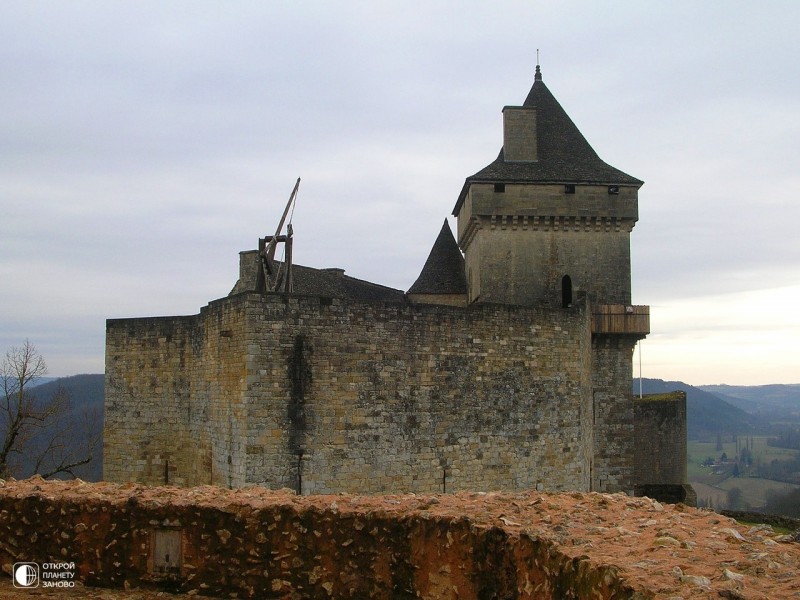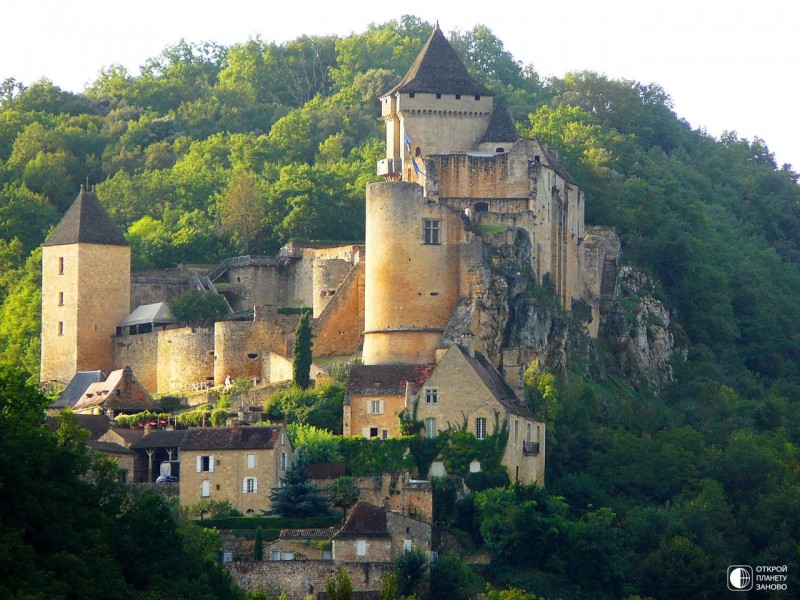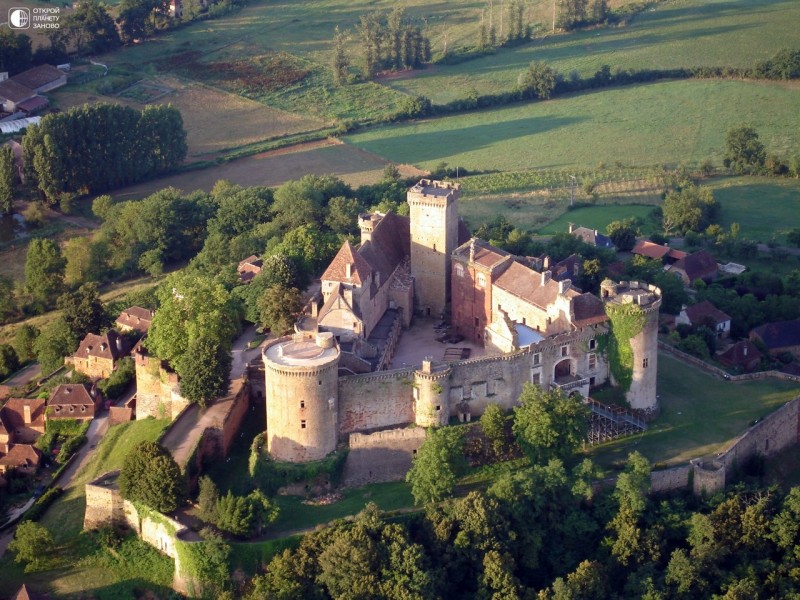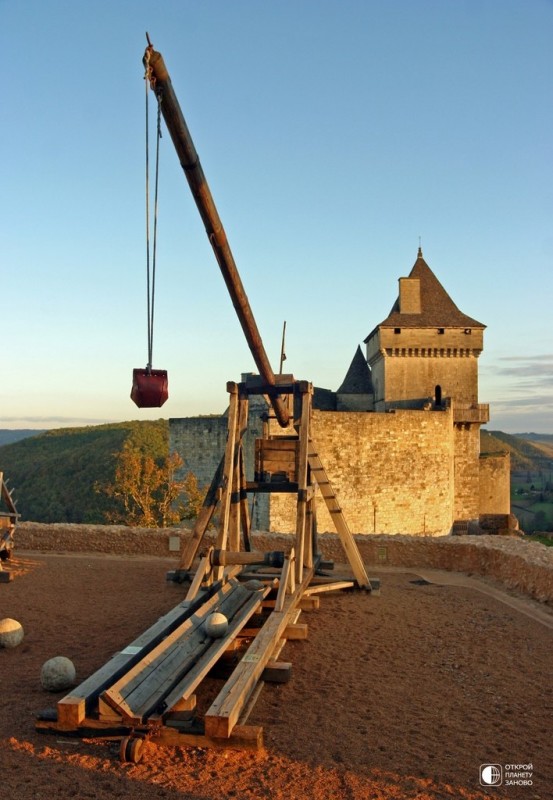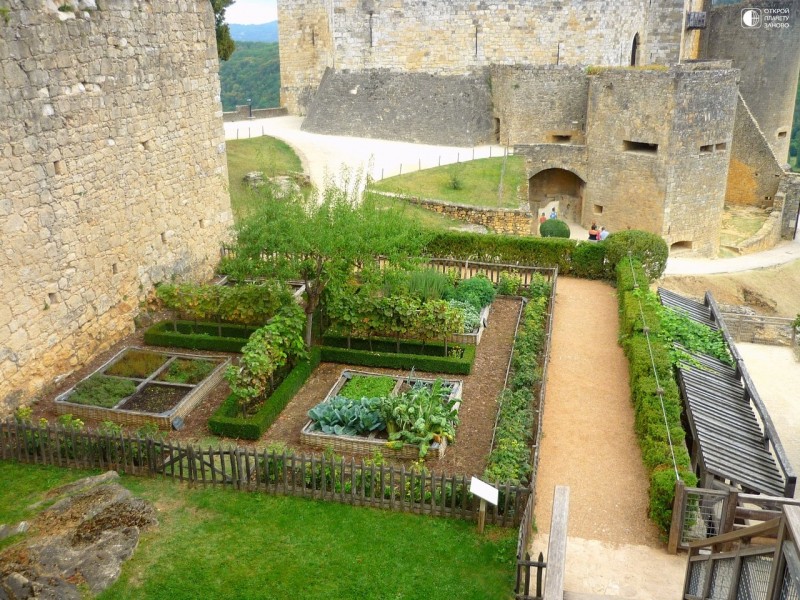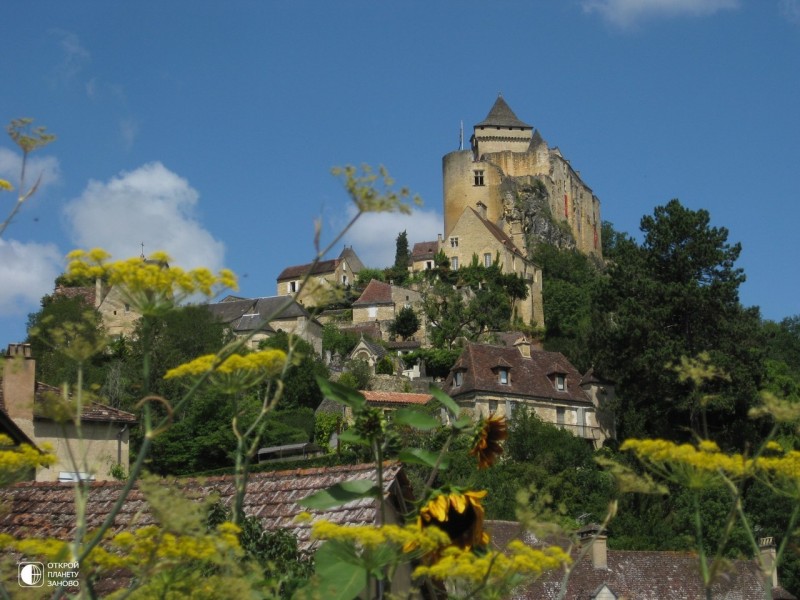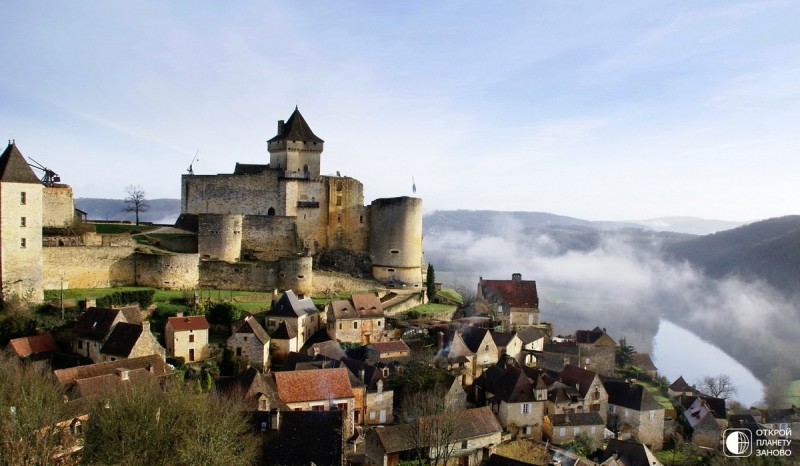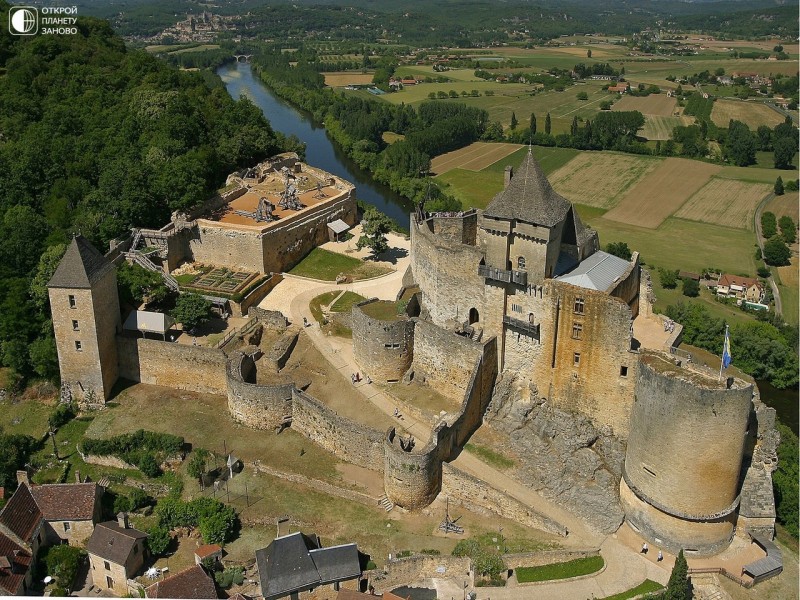
Château de Castelnaud dominates the small village located in a spiral at its foot. It is located on the very edge of the mountain, so it seems - a little more, and the castle will fall into the abyss. But that will not happen. For almost a thousand years the castle has stood in its place, hanging over the steep picturesque left bank of the calm Dordogne River in the historical and cultural region of Périgord in southwestern France.
The first owners of Castelnaud Castle, vassals of the kings of England, for a long time clashed with the neighboring Château de Beynaс, which remained faithful to the French crown. And if the main characters of those distant events disappeared long ago, then these two fortresses still continue their endless confrontation and seem to challenge the oblivion of time and are a good reminder to a person of the senselessness of his thirst for power and vanity. Castelnaud was first mentioned in connection with a crusade against the Albigensians. The castle was at the head of the possessions of the middle-class landowners, and in the north the Dordogne River marked the border with the lands of the powerful barons de Beynak.
After the black era of wars, epidemics, and misfortunes, Castelnaud reigned in silence. The castle has come a long period of prosperity and prosperity. The walls were reinforced, new towers built and a barbican added.
The restoration of the castle, organized by Brandelis de Caumont, was continued by his son Francois and grandson Carl. The ancient fortress of the XIII century. began to gradually correspond to the fashion of that time.
Not far from the main castle a small building was built - the owner’s personal apartments. True, despite their construction, the Comon family still preferred the neighboring castle in Château des Milandes.
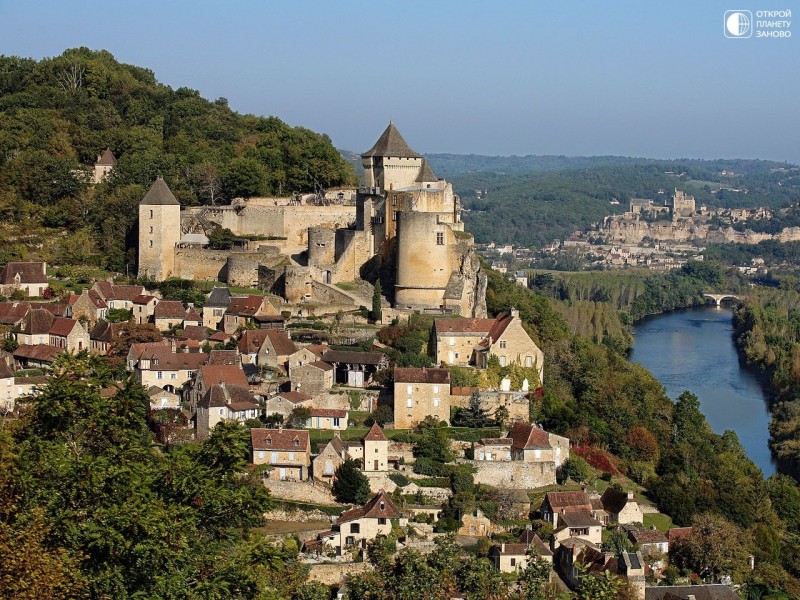
In addition to the improvements of Castelnaud himself, Francois de Caumont was involved in the construction of a cozy estate in the Renaissance style. So, not far from the fortress, a new castle of Miland appeared.
In these years, Castelnaud finally lost its military significance and became an ordinary suburban estate. In 1520, another tower was completed, which had only one purpose - to symbolize the power of the landowners over the land. The next chapter in the history of Castelnaud was opened by the Huguenot commander Geoffroy de Vivans, the grandson of Francois de Comon, who was born precisely in Castelnaud in 1543. This man, famous for his strength and courage, was a companion of the future ruler Henry IV; the endless raids that gave the rhythm of his life, provided him with a solid reputation in the country. The "Geoffroy Militant" inspired fear throughout Perigord; this reputation allowed Castelnaud Castle to be reliably fortified and never to be disturbed during the entire period of religious wars. Between the exploits of the commander Vivan and the 20th century, the castle will no longer know any significant events. The owners of Castelnaud preferred to him, first, the more comfortable and detached castle of Milande, and then their own castle - De la Force, near Bergerac.
Naturally, the condition of the abandoned castle was constantly deteriorating, and, finally, Castelnaud was finally abandoned. After the French Revolution, its destruction accelerated, so that the castle began to look more like ordinary ruins.
Only in 1966, Castelnaud Castle was given the status of a historical monument “Monument Historique”. Since then, two significant campaigns have been conducted to restore it: from 1974 to 1980 and from 1996 to 1998. Some of the collapsed walls were restored, others were only fortified due to the fact that there was no mention of their original condition.
And today, ten kilometers south-west of Sarlat, in the heart of the Black Perigord, between the fortified medieval city of Domm and the village of Beynak, stands the impressive and proud silhouette of Castelnaud Castle.
